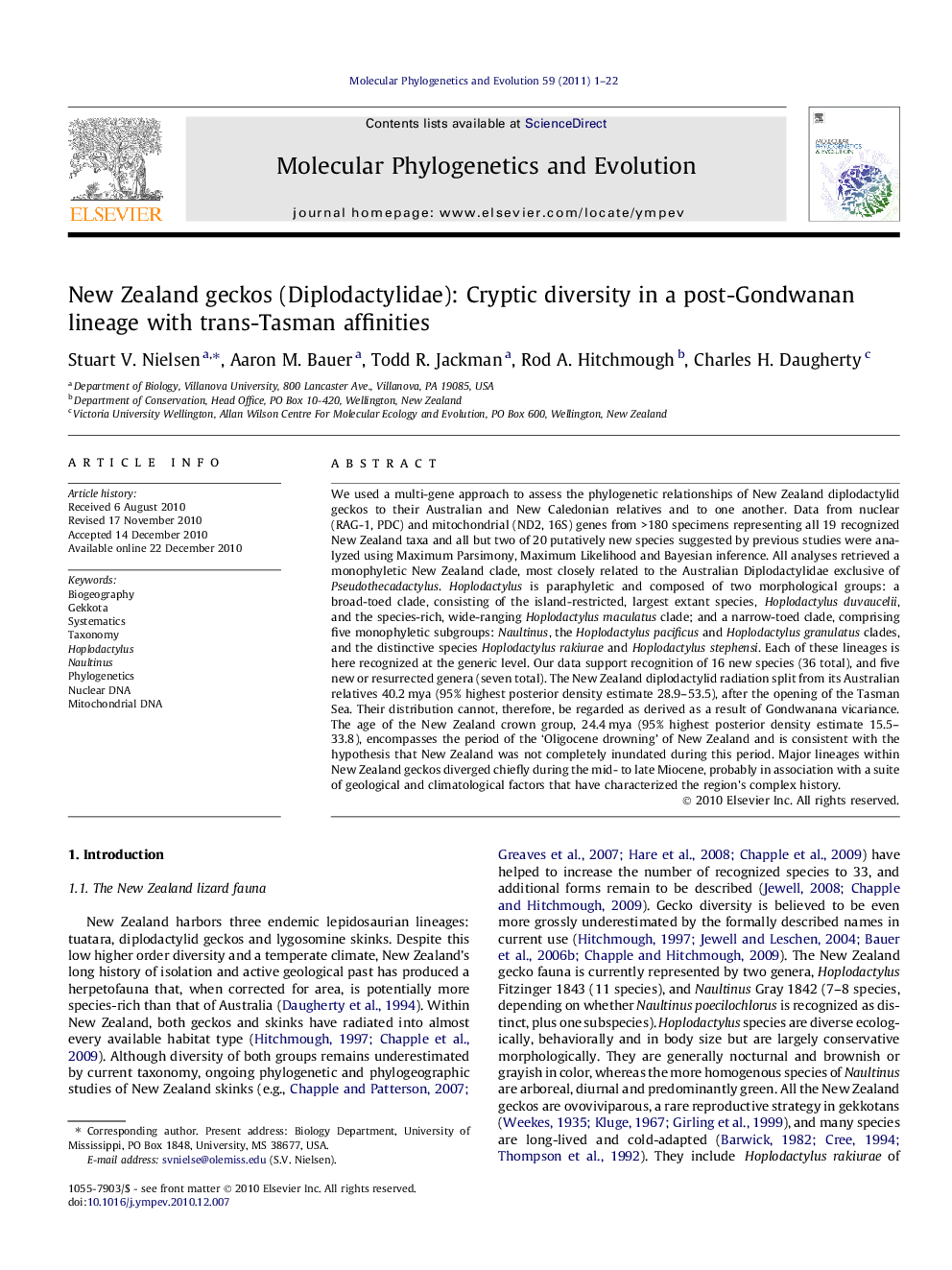| کد مقاله | کد نشریه | سال انتشار | مقاله انگلیسی | نسخه تمام متن |
|---|---|---|---|---|
| 5920669 | 1164301 | 2011 | 22 صفحه PDF | دانلود رایگان |

We used a multi-gene approach to assess the phylogenetic relationships of New Zealand diplodactylid geckos to their Australian and New Caledonian relatives and to one another. Data from nuclear (RAG-1, PDC) and mitochondrial (ND2, 16S) genes from >180 specimens representing all 19 recognized New Zealand taxa and all but two of 20 putatively new species suggested by previous studies were analyzed using Maximum Parsimony, Maximum Likelihood and Bayesian inference. All analyses retrieved a monophyletic New Zealand clade, most closely related to the Australian Diplodactylidae exclusive of Pseudothecadactylus. Hoplodactylus is paraphyletic and composed of two morphological groups: a broad-toed clade, consisting of the island-restricted, largest extant species, Hoplodactylus duvaucelii, and the species-rich, wide-ranging Hoplodactylus maculatus clade; and a narrow-toed clade, comprising five monophyletic subgroups: Naultinus, the Hoplodactylus pacificus and Hoplodactylus granulatus clades, and the distinctive species Hoplodactylus rakiurae and Hoplodactylus stephensi. Each of these lineages is here recognized at the generic level. Our data support recognition of 16 new species (36 total), and five new or resurrected genera (seven total). The New Zealand diplodactylid radiation split from its Australian relatives 40.2Â mya (95% highest posterior density estimate 28.9-53.5), after the opening of the Tasman Sea. Their distribution cannot, therefore, be regarded as derived as a result of Gondwanana vicariance. The age of the New Zealand crown group, 24.4Â mya (95% highest posterior density estimate 15.5-33.8), encompasses the period of the 'Oligocene drowning' of New Zealand and is consistent with the hypothesis that New Zealand was not completely inundated during this period. Major lineages within New Zealand geckos diverged chiefly during the mid- to late Miocene, probably in association with a suite of geological and climatological factors that have characterized the region's complex history.
Research highlights⺠A monophyletic New Zealand clade, most closely related to Australian Diplodactylidae. ⺠Hoplodactylus is paraphyletic and composed of broad- and narrow-toed clades. ⺠Recognition of 16 new species (36 total) and 5 new or resurrected genera (seven total). ⺠New Zealand radiation split after opening of Tasman Sea, refuting Gondwanan vicariance. ⺠Age of crown group suggests New Zealand was not completely inundated during Oligocene.
Journal: Molecular Phylogenetics and Evolution - Volume 59, Issue 1, April 2011, Pages 1-22